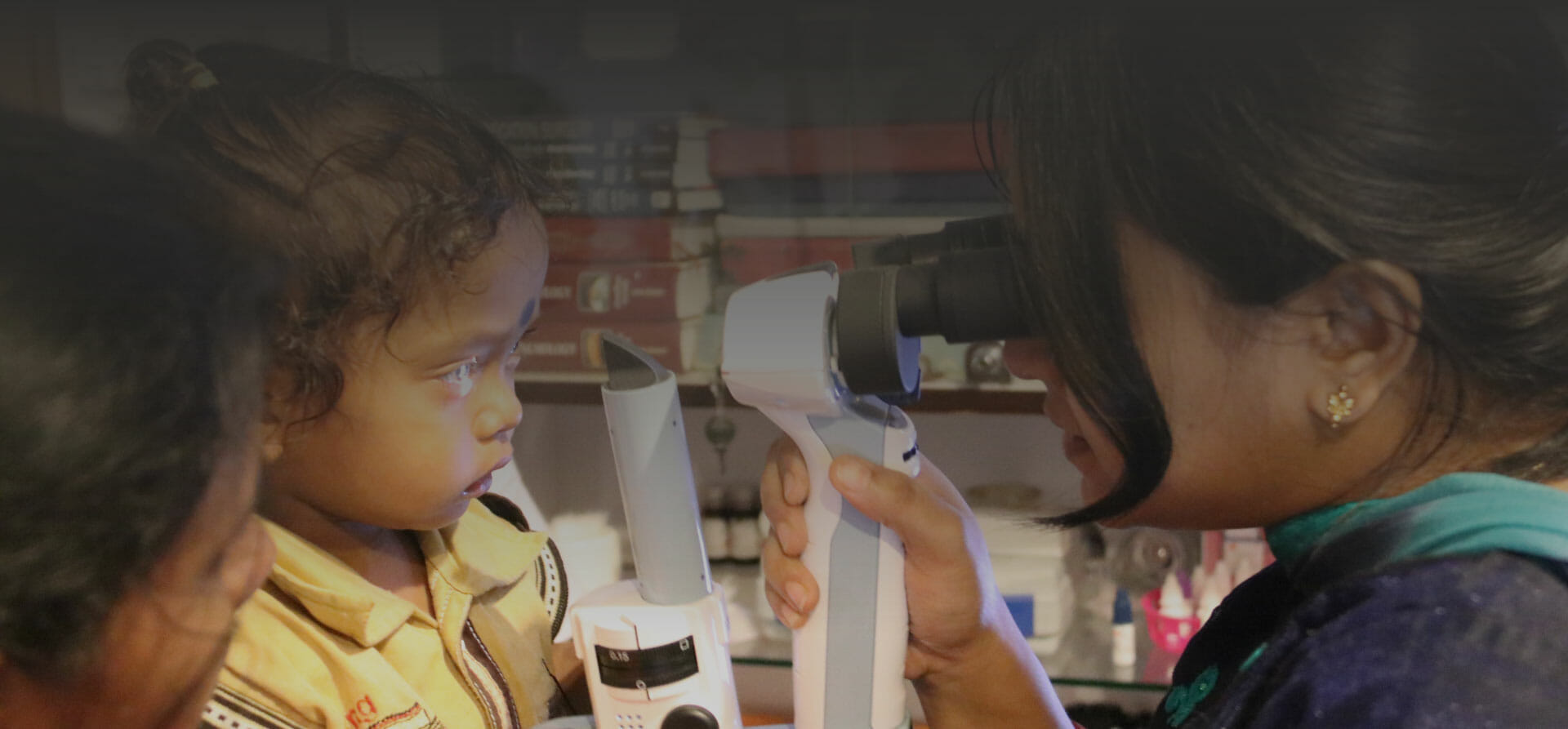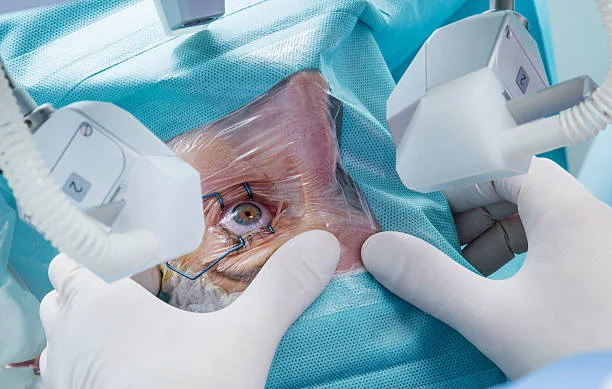The only definitive treatment for cataracts is surgery, but choosing the right method can be overwhelming with so many options available. In this blog, we’ve got you covered. Today, we’re diving into Micro-Incision Cataract Surgery, commonly called MICS. As the name suggests, MICS involves a smaller incision compared to traditional techniques. We’ll break down everything you need to know about MICS cataract surgery, from what exactly it is and its benefits, to the cost involved. So, let’s get started and help you understand why MICS might be the best option for treating your cataracts.
Contents
- 1 Introduction to MICS Cataract Surgery
- 2 Technological Innovations in MICS
- 3 Your Help Can Make a Difference!
- 4 MICS Cataract Surgery Procedure
- 5 Advantages of MICS Over Traditional Methods
- 6 Cost of MICS Cataract Surgery
- 7 MICS Cataract Surgery vs. Phacoemulsification
- 8 Your Small Donation Can Bring Relief
Introduction to MICS Cataract Surgery

Micro-Incision Cataract Surgery (MICS) is a modern approach to cataract removal that utilizes significantly smaller incisions than traditional cataract surgery methods. This technique is designed to minimize surgical trauma and accelerate recovery.
How MICS Differs from Traditional Techniques?
Traditional cataract surgery typically involves incisions of about 2.2 to 3.0 millimeters, through which the clouded lens is broken up and removed, and an intraocular lens (IOL) is implanted. MICS, on the other hand, reduces the incision size to between 1.4 and 1.8 millimeters. This reduction is made possible by using advanced surgical instruments and highly sophisticated IOLs that can be inserted through these smaller openings.
Technological Innovations in MICS
Micro-Incision Cataract Surgery (MICS) utilizes state-of-the-art technology and specialized instruments, setting it apart from traditional cataract surgery techniques. These advancements not only improve surgical outcomes but also enhance the safety and precision of the procedure.
- High-Precision Lasers
These lasers provide exact accuracy for making tiny incisions, reducing tissue damage and improving recovery times. - Specialized Surgical Instruments
Includes ultra-thin phacoemulsification probes for cataract removal and micro-forceps for inserting intraocular lenses (IOLs) through small incisions. - Real-Time Imaging Systems
Technology: Optical Coherence Tomography (OCT) offers real-time, detailed images of the eye, aiding surgeons in precise surgical planning and execution. - Advanced IOLs
Developments in IOL technology include customizable lenses that can be adjusted post-surgery and foldable lenses that fit through micro-incisions, supporting the minimally invasive approach of MICS.
These innovations contribute significantly to the effectiveness of MICS, providing patients with safer procedures and quicker recoveries.

Your Help Can Make a Difference!
Cataract Is The Biggest Reason For Blindness!
With Every Donation, You’re Gifting a Cataract Surgery To Someone in Need!
MICS Cataract Surgery Procedure

Here’s a step-by-step overview of the MICS procedure:
Step 1: Preparation
- Patient Preparation: Before the surgery, the patient undergoes a thorough eye examination. Pre-operative measures include dilating the pupil and administering local anesthesia to numb the eye, ensuring comfort throughout the procedure.
- Surgical Setup: The surgical area is sterilized, and the patient’s face is covered with a sterile drape. A small device called a speculum is used to keep the eyelids open.
Step 2: Making the Incision
- Incision: The surgeon makes a micro-incision in the cornea, typically less than 2 mm. This small incision is key to the minimally invasive nature of the procedure and helps in reducing the recovery time.
Step 3: Removing the Cataract
- Emulsification: A tiny probe is inserted through the incision, emitting ultrasound waves to break up the cloudy lens (cataract) into small pieces.
- Aspiration: The emulsified cataract is gently suctioned out of the eye, ensuring that the capsule that holds the lens remains intact for the placement of the intraocular lens (IOL).
Step 4: Implanting the IOL
- Lens Insertion: A folded intraocular lens (IOL) is inserted through the same micro-incision. Once inside the eye, the IOL unfolds and is positioned into the lens capsule.
- Adjustment: The surgeon makes adjustments to ensure the IOL is correctly situated for optimal visual outcome.
Step 5: Conclusion of Surgery
- Sealing the Incision: Due to the small size of the incision, stitches are often not required; the incision is self-sealing. This contributes to the speed of recovery and reduces postoperative discomfort.
- Post-Operative Care: After the procedure, the patient receives instructions for post-operative care, including medications to prevent infection and manage inflammation. A follow-up appointment is scheduled to monitor the healing process.
MICS offers significant advantages over traditional cataract surgery methods, including reduced surgical trauma and quicker visual rehabilitation, making it an attractive option for many patients seeking effective cataract treatment.
Advantages of MICS Over Traditional Methods
Micro-Incision Cataract Surgery (MICS) offers several significant advantages over traditional cataract surgery techniques. These benefits not only enhance the surgical experience but also contribute to better post-operative outcomes and quicker recovery for patients.
- Quicker Visual Recovery
- Minimal Discomfort
- Lower Risk of Astigmatism
- Less Disruption to the Eye’s Natural Structure
- Preservation of Corneal Integrity
- Reduced Inflammation
- Enhanced Safety
- Lower Complication Rates
These advantages make MICS an appealing option for many patients and surgeons alike, particularly for those seeking a less invasive procedure with a rapid recovery and excellent outcomes. By reducing surgical risks and improving the patient experience, MICS sets a new standard in cataract surgery.
Cost of MICS Cataract Surgery
The costs associated with this procedure can vary widely depending on several factors. Here’s a breakdown of what influences the cost of MICS cataract surgery and what patients can expect to pay.
MICS cataract surgery starts at approximately ₹30,000. This base cost typically includes the surgical procedure itself but can vary based on the surgeon’s experience, the technology used, and the geographic location of the facility.
Factors Influencing the Cost
- Type of Intraocular Lens (IOL) Used: The choice of IOL significantly affects the cost:
- Monofocal Lens: Costs range from ₹30,000 to ₹50,000. These lenses provide clear vision at one distance, either near or far.
- Multifocal Lens: Priced between ₹50,000 and ₹80,000, these lenses allow clear vision at multiple distances—near, intermediate, and far.
- EDOF (Extended Depth of Focus) Lens: These lenses offer a continuous range of vision from near to far and are priced between ₹40,000 to ₹1,00,000. The cost varies based on the brand and specific features of the lens.
- The facility where the Surgery is Performed
- Pre- and Post-Operative Care
- Insurance Coverage
Understanding these cost components helps patients prepare financially for MICS cataract surgery. Despite the potential for higher costs, the benefits of a quicker recovery and the reduced risk of complications can make MICS a cost-effective choice for many individuals looking to restore their vision effectively.
MICS Cataract Surgery vs. Phacoemulsification
When considering cataract removal options, it’s helpful to compare Minimally Invasive Cataract Surgery (MICS) and Phacoemulsification (Phaco) side by side. Here’s a table highlighting the key differences between these two popular techniques:
| Feature | MICS | Phacoemulsification |
|---|---|---|
| Technique & Incision Size | Involves incisions less than 2 mm. | Uses slightly larger incisions, about 2.2 to 2.8 mm. |
| Recovery Time | Quicker recovery due to smaller incisions. | Quick recovery, though generally slightly longer than MICS due to larger incision. |
| Visual Outcomes | Lower risk of astigmatism, fast visual recovery. | Excellent visual outcomes; modern techniques have minimized differences with MICS. |
| Suitability | Ideal for patients needing rapid recovery and minimal disruption. | Suitable for a wide range of cataracts, including dense or hard cataracts. |
| Preferred Use | Recommended for active individuals or those with minimal tolerance for post-surgery downtime. | Versatile and standard for most cataract cases globally. |
Both MICS and Phacoemulsification offer effective solutions for cataract removal with high rates of success and patient satisfaction. The choice between the two often depends on patient-specific factors like the severity of the cataract, lifestyle needs, and desired speed of recovery. Each technique has its advantages, making them suitable for different patient preferences and surgical outcomes.
Your Small Donation Can Bring Relief
Cataracts are a leading cause of blindness worldwide, yet the condition is treatable with a simple surgery. Unfortunately, many people in need cannot afford this life-changing procedure. That’s where your support can make a profound difference.
You Can Give Them A Gift Of Sight!
Every donation, no matter the size, helps us provide essential surgeries to those who really need them. So, join us in giving the gift of sight. Your small donation can bring significant relief to those in desperate need. Together, let’s light up lives and bring vision back to those who are left in the dark.